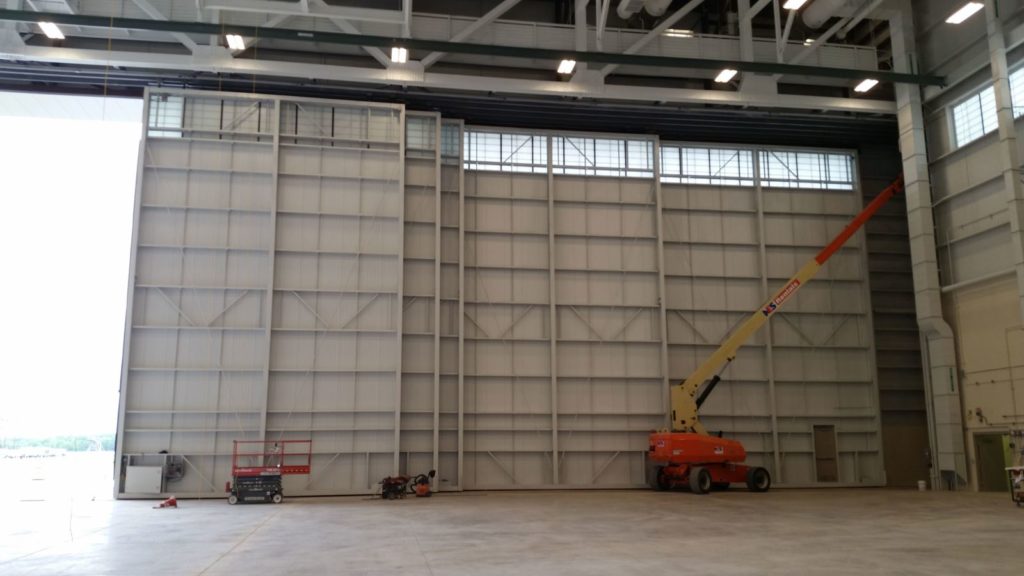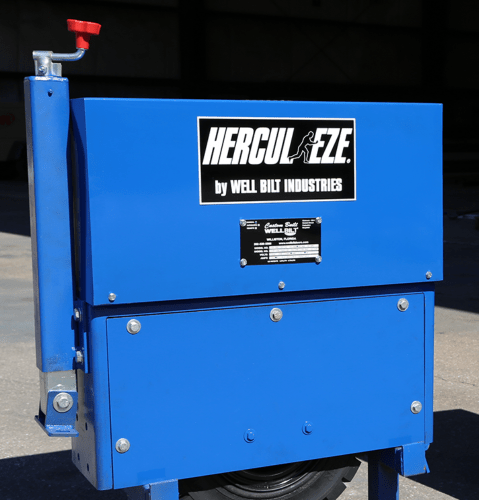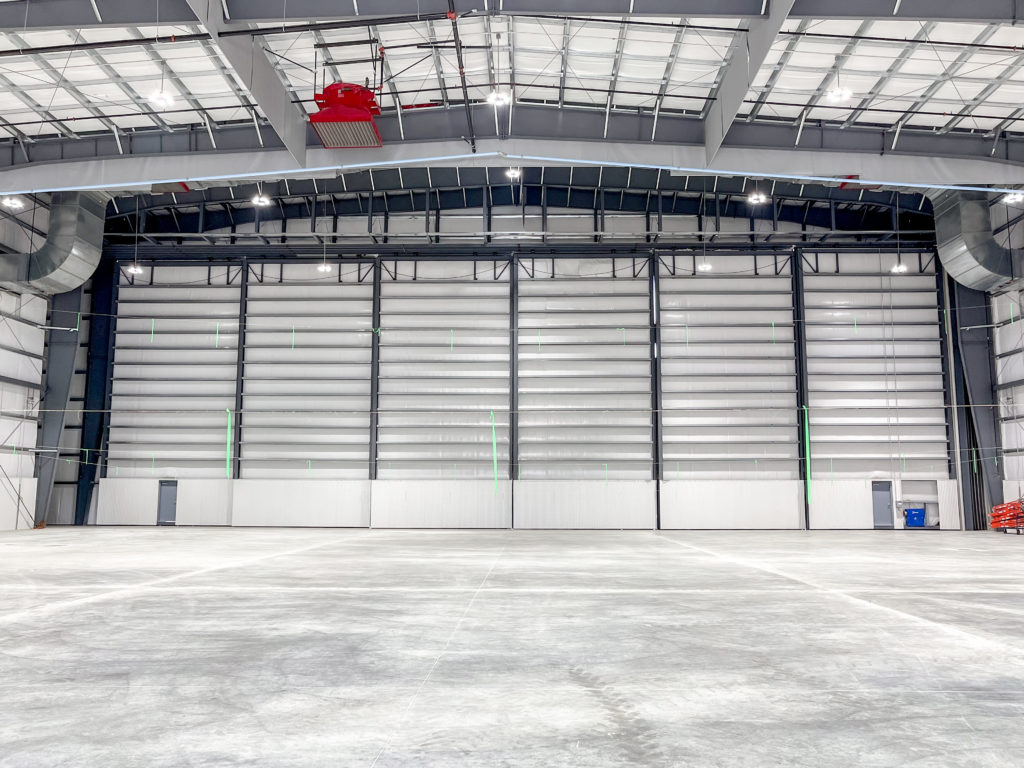As temperatures drop and winter conditions set in, hangar doors are subject to unique challenges that can compromise their performance and lifespan. Proactive maintenance is key to avoiding costly repairs, downtime, and safety hazards during the cold season. Here’s a detailed guide to winter maintenance for hangar doors, complete with specific steps and the reasons behind each.
1. Inspect Weather Seals and Insulation
- Why It Matters: Weather seals and insulation help maintain internal temperatures, reduce energy costs, and prevent drafts. Damaged seals allow cold air, snow, and ice to infiltrate, potentially affecting stored aircraft or equipment.
- What to Do: Check for cracks, gaps, or worn-out sections in the seals. Replace any damaged parts with weather-resistant materials designed for extreme temperatures.
2. Lubricate Moving Parts
- Why It Matters: Cold temperatures can thicken lubricants, leading to increased friction and wear on moving components like hinges, rollers, and tracks. This can result in noisy operation, reduced efficiency, or even mechanical failure.
- What to Do: Use a winter-grade lubricant specifically designed for low temperatures. Focus on hinges, rollers, and bearings to ensure smooth and quiet operation.
3. Clear Tracks and Rollers
- Why It Matters: Snow, ice, and debris can accumulate in door tracks and around rollers, obstructing movement and causing strain on the system. Prolonged obstructions can damage motorized mechanisms or lead to misalignment.
- What to Do: Inspect tracks and rollers for any build-up. Use a brush or a low-pressure air blower to clear debris. For ice removal, apply a safe de-icing solution that won’t corrode metal parts.
4. Check Door Alignment
- Why It Matters: Temperature fluctuations can cause metal components to expand and contract, potentially leading to misaligned doors. Misalignment puts unnecessary strain on the system and compromises safety.
- What to Do: Open and close the door slowly while observing for uneven movement or unusual sounds. If misalignment is detected, contact a professional technician for recalibration.
5. Inspect Electrical Components
- Why It Matters: Cold weather can affect electrical components, such as motors and control panels, potentially leading to malfunctions or system failures. Ensuring these parts are in good working condition is critical for reliable operation.
- What to Do: Check for signs of wear, corrosion, or moisture ingress in electrical wiring and components. Test all safety features, including emergency stop buttons and sensors, to confirm functionality.
6. Test Emergency Systems
- Why It Matters: Winter storms and power outages can occur without warning, making it essential to have reliable manual overrides and emergency systems. Testing these features ensures you’re prepared for unforeseen situations.
- What to Do: Operate the manual override to confirm that it works smoothly. Ensure backup power systems, such as generators, are fully charged and operational.
7. Protect Metal Surfaces
- Why It Matters: Moisture and salt from snow and ice can cause corrosion on metal components, reducing the door’s lifespan and structural integrity.
- What to Do: Clean all metal surfaces with a non-abrasive cleaner to remove salt and grime. Apply a protective coating or rust inhibitor to vulnerable areas.
8. Ensure Proper Drainage
- Why It Matters: Standing water from melted snow can refreeze, creating safety hazards and damaging door components. Proper drainage prevents these issues and protects your investment.
- What to Do: Check that all floor drains near the door are clear and functioning. If your hangar doesn’t have floor drains, consider installing mats or troughs to direct water away from the door.
9. Schedule a Professional Inspection
- Why It Matters: While many maintenance tasks can be handled in-house, a professional inspection ensures that no potential issues are overlooked. Experts can identify wear and tear that might not be obvious and address it before it becomes a bigger problem.
- What to Do: Schedule a winter inspection with a trusted hangar door service provider. They can evaluate critical components, provide adjustments, and offer tailored recommendations.
10. Monitor Daily Operation
- Why It Matters: Consistently monitoring your hangar door’s performance allows you to catch early signs of trouble, such as unusual noises or sluggish operation.
- What to Do: Observe the door’s operation each time it’s used. Look and listen for anything out of the ordinary and address issues immediately.
The Bottom Line
Winter maintenance for hangar doors is not just about ensuring functionality—it’s about safeguarding your aircraft, equipment, and personnel from the challenges of cold weather. By following these detailed steps, you can reduce the risk of breakdowns, extend the life of your hangar doors, and maintain a safe, efficient hangar environment.
Ready to Winter-Proof Your Hangar Doors? Trust the experts at Well Bilt Industries to keep your doors operating smoothly, no matter the season. From routine maintenance to advanced repair services, our team has you covered. Contact us today to schedule your winter inspection or to learn more about our customized hangar door solutions.
Get Started Now or call us at 1-352-528-5566.


